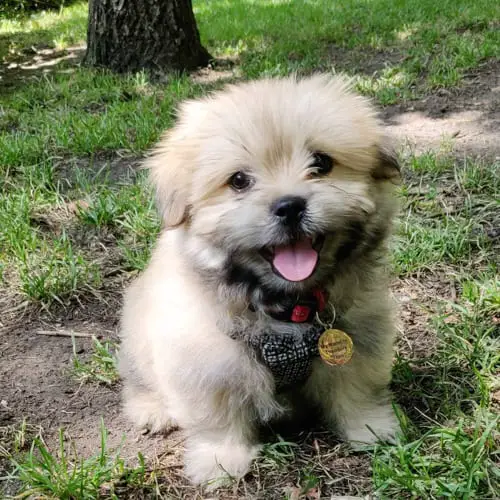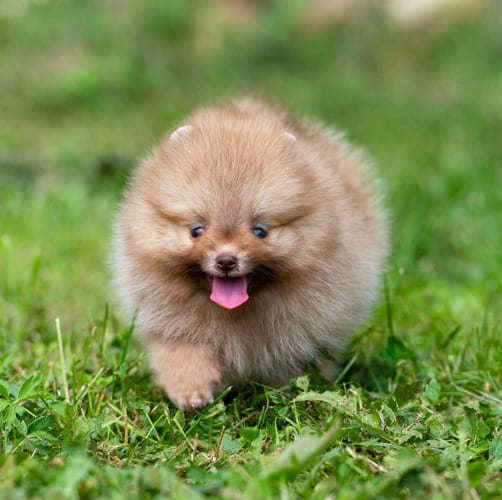It is inevitable for your children to start wanting a pet of their own. Most of them would like dogs, bugging you endlessly until you get them one.
Getting a pet for your child or children is a good deal since doing so will teach them the sense of responsibility of having to train and take care of their fur friend.
However, you do know that children tend to get playful. Sometimes, this playfulness comes out of hand, and things may escalate badly than how you thought they would be.
This is because a child’s playfulness may cross the lines of respect, and you do not want them not to show respect to any living thing—may it be to the elderly, their fellow playmates, or their dogs.

Teaching your child to respect dogs is easier than you may think it is.
Doing this would not only teach them to respect all living beings, but it would also let you be free of worries of dogs eventually lashing out on your child.
Do take note that dogs are capable of accumulating frustration and stress from this out-of-hand playfulness, as well.
Many children are taken to be vaccinated from dog bites and scratches, while there are also dogs taken to vets because of broken bones from harsh and rough play from children.
However, if you start teaching your child how to respect their pet dog, this could be avoided beforehand.
If you find trouble teaching your children to respect dogs, then here are a few tips that you could try out and eventually see improvement with how your child plays with their dog.
Teach Them How to Play with Dogs

There are different ways of hanging and playing with dogs, and there are certain dos and don’ts in doing so, as well—but children won’t immediately get the memo.
So, as the supervising elderly or parent, you should teach them how to play with dogs first and foremost.
The basic things that you need to teach children are the don’ts when playing and interacting with dogs.
This would mainly be not to disturb them. Like humans, dogs are not exactly patient when someone disturbs them during their time of sleep or eating.
When a child suddenly takes away a dog’s food or perhaps startle them from their deep sleep, a dog may react harshly without second thoughts.
You should also teach them not to pull at their dog’s tails and ears, in the same thought that you would not want them suddenly pulling someone else’s hair.
Even pinching a dog—even if it’s playfully—is not encouraged, as a dog may take this in a bad way.
Always Supervise Your Children and Dog’s Playdates

You may know your child and dog well, but unexpected things may still happen when you are not around.
The best thing to do is always to supervise your children and dog’s playdates. Always check how your children play with the dog, and see how your fur friend reacts to it.
Dogs have different personalities, the same way that humans do. So, if you are to supervise, you must know your dog well, too.
You must be familiar with their behaviors, such as growling and baring teeth.
Some people may see these actions as aggressiveness, but it could just be a simple reminder or gesture from your dog to not go any further with the tricks.
Not only should you watch out for your dog’s frustration, but also see to it that your child is not hurting them, as well.
If you hear your dog whining, be on alert as your child may have done something to hurt them, and be sure to supervise them not to do it again.
Let Them Take Care of the Dog

As mentioned above, adopting a fur friend can introduce a sense of responsibility to your children.
That is if you let them take part in taking care of your pet dog.
You can start with small, simple steps, such as letting them give food during mealtime, brushing their friend’s coat every week, and letting their pet exercise with a simple playtime.
Once your child gets to take care of your dog, they will eventually bond more together, and your child will also get to know their pet’s likes and dislikes.
Bonding will strengthen the child and dog’s relationship, and eventually, your child will know how to respect their fur friend more than ever.
Just as already stated, don’t let your child do all of this without supervision still.
There are still dos and don’ts in taking care of a dog—such as the food given to them.
Dogs cannot digest cooked bones well, and chocolates are extremely harmful to them.
You can also try involving your child in training your fur friend. Teaching dogs the basic “sit,” “stay,” and “lay down” will require patience, and this may serve as a good activity for your child, as well. Children may find this activity extremely amusing, as well.
If you manage to teach the dog the basics, you may teach them a few playful tricks, like rolling or shaking hands.
Remember That Dogs are Not the Same

Do not limit your child’s knowledge to what they know about their pet alone. Keep in mind that dogs are different from one another.
Your family dog may be nice, and your child may have gotten used to this and will have the impression that all dogs are the same.
This may have your child randomly running towards any dog they do not know.
No matter how much a child has interacted or has bonded with your dog, spontaneously running to one they do not know highly discouraged.
A lot of children tend to do this with the thought that the dog would reciprocate their enthusiasm and start bonding with them, as well. Let your child know that that is not always the case.
There are instances when dogs on the streets are not particularly friendly.
Some dogs that scatter on the street may be kind, but there is also a population that is aggressive, as well.
Tell your child to be on the safe side and do not play with every dog they see so that they could avoid being hurt.
This is not limited to street dogs alone. Even dogs with a leash should not be randomly run towards to.
Dogs may be friendly with their owners but may take time to adjust to strangers that they meet on the street.
This could apply to your dog, as well. No matter how cute you may think they are, they might still be unfriendly to people they have just met.
Encourage your visitors and guests to go lowkey when interacting with your pet dog, as suddenly grabbing and carrying them may aggregate your fur friend.
Be a Good Role Model or Example to Your Child

They are still children, and surely you know how children copy what an adult does.
If you see them being aggressive towards the dog, they might have picked it up from you or a movie or show they watched.
You must keep in mind that it is extremely important and necessary that you are always there to supervise.
Supervising what a child watches is a must for every adult. If you are busy and are mostly not around, then make sure that they are with an adult who could supervise you.
There are child-friendly applications available for phones, providing your children with safe media.
Being a good role model or example to your child is supposed to be a given, as well.
The first school of a child is their home, and they pick up everything they have learned from what they see and hear.
If your child sees you being kind to your dogs, then they will act the same.
There are basic things that you need to do to get the message across to your children.
- Play gently. Children are full of energy and are eager to play the most that they could with their dogs, but show them that it doesn’t have to be that way. To show that is to play gently with your fur friends.
- Pat the dog gently, as well. Some adults lock their dog’s snout more aggressively, then shrug it off as “playtime” or an alternative way to pat them. Do not do this as your child will most likely copy, and this gesture could aggregate your dog. Instead, pat your dog in the gentlest way possible, softly, on the head.
- Don’t jump at the dog. This will startle them nonetheless. Dogs react fast, and they will not react well when you suddenly approach them out of nowhere. Tell your child to let the dog adjust first, then let the pet slowly come to them. When a dog finally approaches you, that means that you have already earned their trust.
- Leave the dog alone when necessary. This includes eating and sleeping. Children tend to steal a dog’s food or wake them up inside their crates for no specific reason, which is frustrating. A dog may react badly to these “jokes,” and you wouldn’t want this to happen inside your household.
Children could also be rough when playing with the dog.

Chew toys may be thrown, and if you do see them do that, immediately take the toy away from their hands and tell them why it is bad to throw things at your pet dog.
If you see them starting to become aggressive when playing with the dog, such as grabbing or pinching tails and ears, then immediately separate them as the things that may unfold after are unpleasant.
Like always, teach your child the dos and don’ts. It is best that you separate them, not for a brief moment—give your child a time-out from playing with the dog.
Teaching all of these does not only provide safety for your child and dog.
Every single thing that your child has picked up by bonding and respecting their pet dog will also teach them how to apply all of this in real life.
Getting a dog comes with responsibility, respect, and faithfulness. A child will grow well and interact well with their peers once they learn all of these.
Above all that, do keep in mind that dogs should be respected as they are individuals, as well.
Your child must receive this message, too, so that they could learn how to respect every individual they come across.





